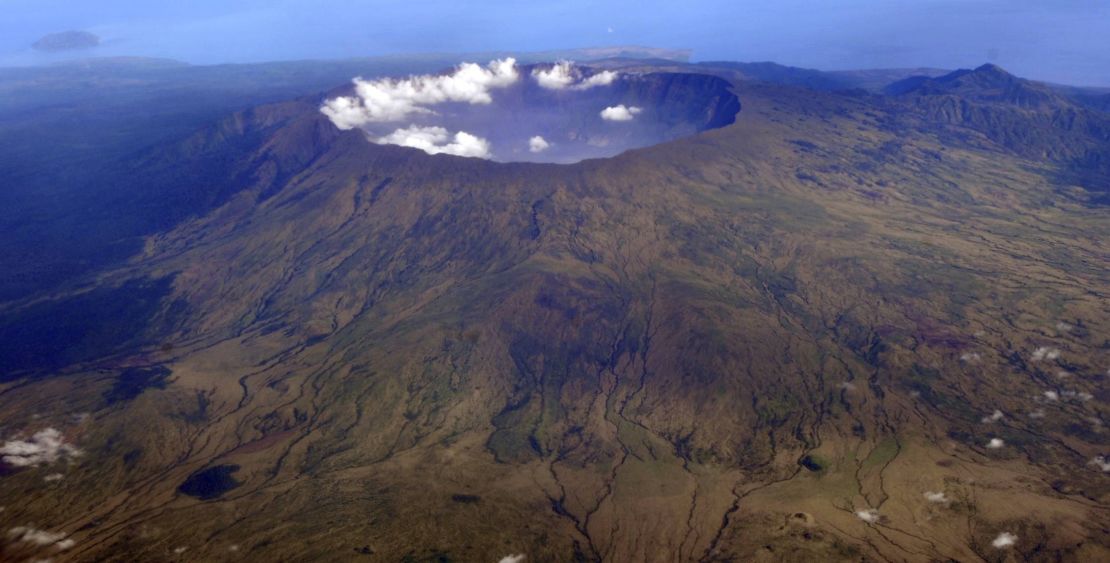It happened more than two centuries ago, but its impact remains enormous. Historians have credited the infamous “year without a summer” of 1816, at least indirectly, with the invention of the bicycle and the writing of the classic novel “Frankenstein.”
In April of 1815, Mount Tambora exploded in a powerful eruption that killed tens of thousands of people on the Indonesian island of Sumbawa. The following year became known as the “year without a summer” when unusually cold, wet conditions swept across Europe and North America.
Since 1913, researchers have suggested that the two events were linked. Now a new study shows that the cold summer temperatures of 1816 wouldn’t have been possible without the volcanic eruption. The research published Tuesday in the journal Environmental Research Letters.
The immediate effects of the volcano resulted in mass destruction. The eruption, the flows that came from it and the related tsunamis destroyed homes and claimed 10,000 lives. Another 80,000 would die from disease that spread in the aftermath.

“The eruption of Mount Tambora in April 1815 was among the most explosive of the last millennium,” said Andrew Schurer, lead study author and research associate at the University of Edinburgh’s School of Geosciences. “It had an enormous impact locally, devastating the island of Sumbawa.”
The tremendous amount of material ejected by the volcano contributed to the global impact that followed.
“The eruption injected a huge amount of sulphur dioxide into the stratosphere, which would have quickly spread across the world, oxidising to form sulphate aerosols,” Schurer said. “These volcanic aerosols reduce net shortwave radiation causing widespread, long lasting surface cooling. They also lead to a reduction in global rainfall, while wettening some dry regions and causing dynamic changes in the large-scale circulation of both ocean and atmosphere.”
The global temperature dropped between one and three degrees Celsius. It was the coldest year in at least the last 250 years, according to the study. Each season showed temperature anomalies, but the summer was the most drastic change, with the coldest recorded mean summer temperature for Europe between 1766 and 2000.
In the summer of 1816, cold, wet conditions in central and Western Europe and even North America led to crop failure, the death of livestock and famine. New England saw snow and “killing frost.” Cloud cover kept the skies dreary. It was called the “last great subsistence crisis in the Western World.”
Previous research has even suggested that the heavy clouds and rainfall from the eruption contributed to Napoleon’s defeat at Waterloo three months later in Belgium.
Schurer and his colleagues used early data and climate models to determine the effect of the volcanic eruption. They compared the data against other years with similar sea-level pressure patterns.
In similar years, precipitation was comparable, but not the cold temperatures. When the volcano was introduced to the scenario, a step called volcanic forcing, the scientists were able to replicate the summer of 1816.
“Including volcanic forcing in climate models can account for the cooling, and we estimate it increases the likelihood of the extremely cold temperatures by up to 100 times,” Schurer said. “There is strong evidence in the model simulations that the volcanic eruption increases the chance of such a wet summer over Central Europe by about 1.5 to three times. And without volcanic forcing, it is less likely to have been as wet and highly unlikely to have been as cold.”
Agricultural failure was rampant during this time, and the price of food jumped. This also increased the price of oats for horses, who were the main transportation source at the time, according to the National Center for Atmospheric Research. This has been credited with helping inspire the invention of the bicycle by Karl Drais in 1817.
The summer, or lack thereof, in 1816 also inspired something else: Gothic tales.
Lord Byron, Claire Clairmont, Dr. John William Polidori, Percy Shelley and Mary Godwin (before she married Shelley) stayed in a villa overlooking Lake Geneva in Switzerland. But the weather at their idyllic setting was gloomy.
During one of their discussions, Byron suggested that each member of the restless group write a ghost story to share. Within a few weeks, Godwin had written “Frankenstein,” Byron penned his poem “Darkness” and Polidori wrote his short story, “The Vampyre.”















